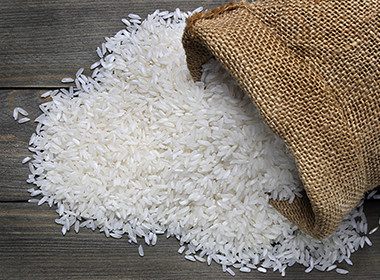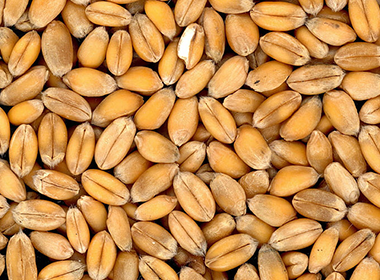AGRICULTURE
Agriculture sector, the backbone of the rural population, is facing its worst crisis due to large indebtedness and farmers are being driven to committing suicides. Although the State contributes major share of rice and wheat to the national pool, yet agriculture has become a non-profitable activity for small and marginal farmers who are under huge debt. The high dependence on rice-wheat cultivation cycle and overexploitation of land has led to certain unforeseen complex problems. The rapidly depleting water table and high toxicity of soil from over-use of fertilizers and pesticides has led to multiple health issues, which is reflected in the high incidence of cancer and organ failures. Therefore, the focus needs to be shifted from only agriculture to agro-processing industry, floriculture, tourism, industry and the services.
The total cultivable area of the State is 4.2 million hectares, which constitutes only 3% of the net area sown in the country. Yet, with this small area, Punjab ranks 7th as gross producer of wheat in the world and it generates third largest marketable surplus after Canada and Australia, which is about one tenth of the global trade in wheat. In case of rice, its market surplus is 2nd only to Thailand at the global level. Despite a decline in the share of agriculture in the aggregate GSVA of the State, its share in employment is by far the highest. Agriculture is still the dominant source of livelihood for the people of the State. More than 50% of the rural population is still dependent upon agriculture for its livelihood and employment. However, over the years, agriculture yield has stagnated in the State while cost of cultivation has increased significantly. Instead of crop diversification, the Wheat and Rice Cropping Pattern is spreading across the State which in turn has impacted agriculture yield significantly.
GRAIN
A grain is a small, hard, dry seed, with or without an attached hull or fruit layer, harvested for human or animal consumption. A grain crop is a grain-producing plant. The two main types of commercial grain crops are cereals and legumes. The term specifically refers to seeds of plants of the grass family, such as wheat, corn, and rice; seeds of non-edible grass species are also often called "grains."
After being harvested, dry grains are more durable than other staple foods, such as starchy fruits (plantains, breadfruit, etc.) and tubers (sweet potatoes, cassava, and more). This durability has made grains well suited to industrial agriculture, since they can be mechanically harvested, transported by rail or ship, stored for long periods in silos, and milled for flour or pressed for oil. Thus, major global commodity markets exist for maize, rice, soybeans, wheat and other grains but not for tubers, vegetables, or other crops
Importance of Storage of Grains
Storage of grains is very important aspect of agriculture because after harvesting it is necessary to protect grains from insects, rodents etc. so that they can be consumed and preserved for a longer period of time. Enabling a better balanced diet throughout the year.
Grains and Cereal
Grains and cereal are synonymous with caryopses, the fruits of the grass family. In agronomy and commerce, seeds or fruits from other plant families are called grains if they resemble caryopses. For example, amaranth is sold as "grain amaranth", and amaranth products may be described as "whole grains". The pre-Hispanic civilizations of the Andes had grain-based food systems but, at the higher elevations, none of the grains was a cereal. All three grains native to the Andes (kaniwa, kiwicha, and quinoa) are broad-leafed plants rather than grasses such as corn, rice, and wheat.
RICE

Rice is the seed of the grass species Oryza glaberrima (African Rice) or Orysa sativa (Asian rice). As a cereal grain, it is the most widely consumed staple food for a large part of the world's human population, especially in Asia and Africa. It is the agricultural commodity with the third-highest worldwide production (rice,741.5 million tonnes in 2014), after sugarcane (1.9 billion tonnes) and maize (1.0 billion tonnes).
Rice, a monocot, is normally grown as an annual plant, although in tropical areas it can survive as a perennial and can produce a ratoon crop for up to 30 years. Rice cultivation is well-suited to countries and regions with low labor costs and high rainfall, as it is labor-intensive to cultivate and requires ample water. However, rice can be grown practically anywhere, even on a steep hill or mountain area with the use of water-controlling terrace systems. Although its parent species are native to Asia and certain parts of Africa, centuries of trade and exportation have made it commonplace in many cultures worldwide.
WHEAT

Wheat is a grass grown all over the world for its highly nutritious and functional grain. It is one of the top three most produced crops in the world, along with corn and rice. Wheat has been cultivated for over 10,000 years and probably originates in the Fertile Crescent, along with other staple crops. A wide range of products are made from it by humans, including most famously flour, which is made from the grain itself.
Wheat (Triticum aestivum) is the most important grain in that it provides more nourishment for more people throughout the world than any other food. Greater than one-third of the world's population utilizes wheat as a main dietary staple
MSP
Minimum Support Price (MSP) is a form of market intervention by the Government of India to insure agricultural producers against any sharp fall in farm prices. The minimum support prices are announced by the Government of India at the beginning of the sowing season for certain crops on the basis of the recommendations of the Commission for Agricultural Costs and Prices (CACP). MSP is price fixed by Government of India to protect the producer - farmers - against excessive fall in price during bumper production years. The minimum support prices are a guarantee price for their produce from the Government. The major objectives are to support the farmers from distress sales and to procure food grains for public distribution. In case the market price for the commodity falls below the announced minimum price due to bumper production and glut in the market, government agencies purchase the entire quantity offered by the farmers at the announced minimum price.

FOOD GRAIN STORAGE LOSSES
Post-harvest losses account for about 10% of total food grains due to unscientific storage, insects, rodents, micro-organisms etc., In India, annual storage losses have been estimated14 -million tones worth of Rs. 7,000 crore in which insects alone account for nearly Rs. 1,300 crores. The major economic loss caused by storage insect pests is not always by consumption but also by the amount of contamination. About 600 species of insects have been associated with stored grain products. Nearly 100 species of insect pests of stored products cause economic losses. In India annual storage losses have been estimated14 -million tons of food grain worth of Rs. 7,000 crore every year in which insects alone account for nearly Rs. 1,300 crores. According to World Bank Report (1999), post-harvest losses in India amount to 12 to 16 million metric tons of food grains each year, an amount that the World Bank stipulates could feed one-third of India's poor. Out of these post-harvest losses storage -insects alone account for 2.0 to 4.2 per cent followed by rodent’s 2.50per cent, Birds 0.85 per cent and moisture 0.68 per cent.
STORAGE LOSS IN RICE
Losses occurring during storage are affected by conditions prevailing in the pre-storage stages (harvesting, threshing and drying). Similarly, post storage losses may be affected by conditions during storage. In traditional warehouses, such loss occurs in the case of rice in PSWC during storage and it is mainly due to driage in the moisture and multiple handlings.
Loss is a measurable decrease of the foodstuff which may be quantitative or qualitative. It should not be confused with damage which generally refers to the superficial evidence of deterioration, e.g. broken grains (which may later result in loss). As per Govt. of India specifications prescribed for rice, it is to be accepted and stored containing Moisture content maximum up to 15%. More the Moisture, more shall be the driage during storage and so more shall be the losses. Similarly more the storage period, more shall be the driage and more the losses.
Types of storage losses:
1. Insects cause different kinds of losses viz.
- Quantitative loss
- Qualitative loss
- Loss of seed viability
- Damage to storage structures
2. Quantitative loss
- Direct feeding insects cause loss in weight of the stored grains
- A rice weevil will eat 14 mg out of 20 mg of a rice kernel during its developmental period.
- But commercially the whole grain is lost
- A female weevil, through three generations per year, has the biotic potential to reproduce 1,500,000 offspring which will consume 1,500,000 kernel of rice (amounting 30 kg of rice). A gravid female of Sitotrogacerealella can destroy 50 g of rice completely in 3 generations
3. Qualitative loss
- Direct feeding on the grain
- Chemical changes in grain content
- Contamination of grains with moult skin and body parts
- Spreading the pathogenic micro-organisms
- Loss of seed viability
- Insects were found to cause the loss of viability of seeds to an extent of 3.6 to 41 % in paddy
4. Damage to storage structures
- Insects like Lesser grain borer has the capability to destroy the wooden storage structures, containers polythene lined bags etc.,
- Food losses -Direct or Indirect losses:
- A direct loss is disappearance of food by spillage, or consumption by organisms including insects.
- An indirect loss is the lowering of quality to the point where people refuse to eat it.
5. Significance of infestation
- Weight loss
- Germination loss
- Commercial value loss
- Consumer preference loss
- Nutritional values loss
- Contamination
- Heating
- Facilitates fungal growth
- Storability loss.
Principles of storage losses: Govt. of India has prescribed norms for storage loss in rice and if the same are observed over and above the prescribed norms, the same are called ‘Unjustified Losses’, the value of which is recovered at Economic cost from the PSWC bills, which is a direct monetary loss to the PSWC.
- Unit of SL is a Stack of foodgrain
- SL is calculated Monthly basis and called Storage Loss Statement(SLS) prepared on 29.10 Format prescribed by FCI.
- SL is calculated only when the stack is fully issued out till its last bag.
- Stack having any left over quantity of foodgrains loose or partially filled bags will not be included in Monthly SLS( Storage Loss Statement)
- For all the varieties of a commodity and crop years, only one SLS will be prepared.
- SL is basically calculated on the RW(Receipt Weight)
- SL is the quantity of stocks that is reduced than what was stored during storage period
- Main factor contributing SL is the driage in Moisture.
- Correct calculation and recording the MCR( Moisture Content at the time of Receipt) and MC(Moisture Content at the time of Issue) is necessary.
- For this Moisture Meters should be well calibrated
Assessment of storage losses;
As per Govt. of India/ FCI circular dated 12.12.2012, following basic principle/ norms are prescribed to measure the storage loss in rice during storage.
- Full allowance for weight loss for driage of moisture between 15% and 14%
- 0.7% weight loss for driage of 1% moisture and in proportion there of below 14%
- 0.2% for storage period of 365 days on proportionate basis
- Total Storage Loss= (a)+(b)+(c)
STORAGE GAIN
PSWC stores wheat after procurement form the farmers in their warehouse and in open storage. Every year on average 5Lack MT wheat is stored in open. Since PSWC does not have sufficient Scientific CAP( Cover And Plinth) , thus most of the stocks are stored Rice mill premised on brick paved, semi-pakka and some time katcha places. During Current Rabi season 20-21, PSWC has to store more than 14 LMT wheat in open storage. Wheat is generally procured from the farmers at moisture content range of 9 to 11%. Wheat being hygroscopic in nature absorbs moisture from atmospheric Relative Humidity and maintain Moisture Equilibriums. This gain in moisture by the grain adds to its weight. This added weight of the grain is called Storage Gain.
Norms of storage Gain: Based on a study of a sub-committee FCI’s BoD on 27.9.2012 accepted the wheat & rice norms. These norms were accepted by MoCAF & PD, GoI on 20/21.11.2012 and circulated by FCI on 12.12.12 (CP/22-27):
i. The norms are purely ‘Adhoc and Interim’.
ii. FCI has already entrusted a study to ICAR for determining the Storage Loss/Gain in wheat and rice. Till such time the report is received, the storage loss/Gain norms are to be followed.
iii. The storage loss norms are only upper limits.
iv. Storage gain norms for wheat:-
a. Current procured upto 30th June: CAP & Covered: No Gain
b. Current procured but issued after 30th June or stock of wheat procured in earlier seasons issued in any month:
| Stock of State agencies |
Stock in godown hired by FCI |
Covered:1% gain
CAP: 0.7% gain |
Covered & CAP :- 0.7% gain for every
1% increase in Moisture content. |
In case of a loss this should be examined separately on merits of the case.
Storage gain in FCI stored stocks: The storage gain is calculated on monthly basis for those stacks only which have been issued completely And the storage gain is determined taking in to consideration the gain in Moisture content % in the wheat. If the storage gain during delivery is less than the prescribed norms, the same is termed as ‘Lesser Gain’ for which FCI recovers the value at the rate of Economic cost of the current year. The Lesser gain is presented in the Monthly Statement call ‘ Storage Gain Statement(SGS).
Wheat procured and stored by PSWC and state Agencies: Here in this case, moisture content is not the element in determination of storage gain. No storage gain is to be delivered against the Currently procured but issued before 30th June.
But it is necessary to give storage gain in currently procured but issued after 30th June or stock of wheat procured in earlier seasons issued in any month. Storage gain of 1% in covered and 0.7% in open storage irrespective of the storage period is prescribed.
Status of storage losses/ Gain in PSWC
In rice the unjustified storage loss is less than 0.09% and the lesser gain in wheat is negligible.